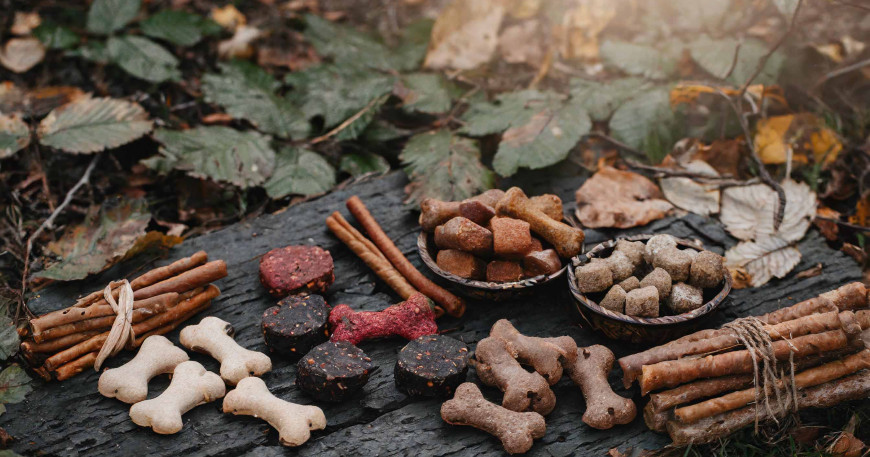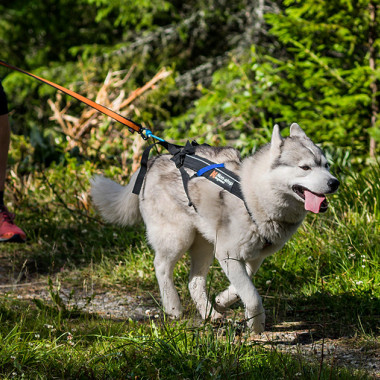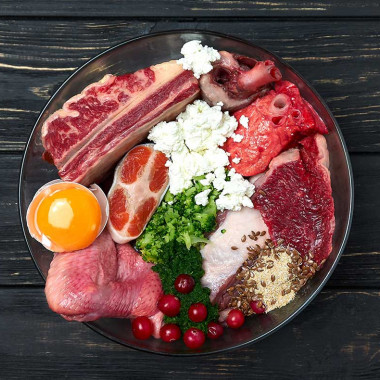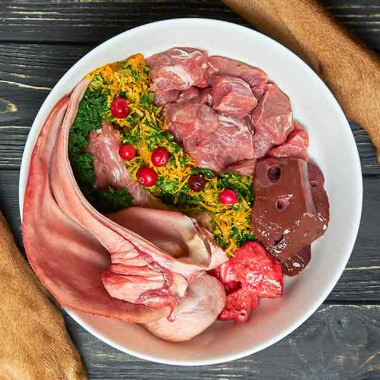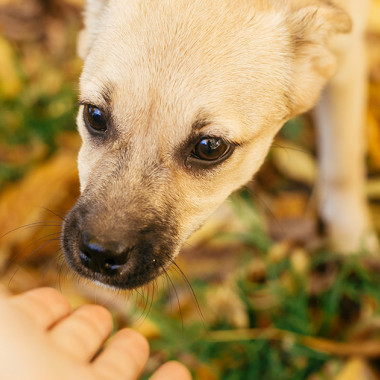When it's time to reward your four-legged friends, choosing the right treats is crucial. Treats serve not only as an excellent reward for your dog but can also have a significant impact on their health, condition, and training. With a wide variety of options, from freeze-dried meat to tasty biscuits and tougher chew treats, it can sometimes be challenging to choose the right one. In this article, we will introduce you to different types of dog treats, their health benefits, and their intended purposes.
Freeze-Dried Meat: Premium Quality Treats
Freeze-dried meat retains its natural nutrients and flavor without the need for added preservatives. These treats are rich in high-quality proteins and essential amino acids, which are crucial for healthy growth and muscle regeneration. They are great as training rewards due to their intense flavor, which can increase your dog's motivation and focus. These treats are also suitable for dogs with sensitive digestion, as they are easily digestible and gentle on the stomach.
Parma Ham Bones: A Healthy Chewing Treat
Parma ham bones have an unmistakable flavor and provide dogs with hours of fun and chewing. Chewing is a natural instinct for dogs, which helps keep their teeth and gums healthy. Additionally, bones are a source of minerals like calcium and phosphorus, which support a strong skeletal structure. These large treats can be given to dogs to diversify their diet, as a tasty pastime, or as an extra reward after training.
Dried Fish and Fish Treats: Omega-3 for a Shiny Coat
Fish treats, including dried fish, are exceptional for their high content of omega-3 fatty acids, which are key for healthy skin and a shiny coat. Additionally, these tasty treats are beneficial for heart and vascular health. Smaller fish can be given to dogs during training, while larger pieces can serve to diversify the dog's diet.
Dried Meat and Meat Treats: Protein Bombs
Meat treats, including dried meat, offer a wide range of flavors and high nutritional value. Due to their high content of quality proteins, they are ideal for supporting vitality and muscle growth. During training, they can serve as nutritious rewards that do not burden the dog and provide immediate gratification.
Dried Ears, Intestines, and More: Tougher Chews
Dried ears and dried intestines, along with other similar products, are especially suitable as long-lasting chewing treats. Chewing and gnawing on these treats help dogs keep their teeth clean while also promoting healthy digestion. Chewing can also provide mental relief for dogs and help reduce stress.
Antlers, Horns, and Hooves: A Natural Source of Minerals
Antlers, horns, and hooves are not only durable and long-lasting treats, but they are also a natural source of minerals. Chewing on them promotes dental health and provides hours of entertainment.
Organic Sausages and Biscuits: Tasty Treats from Organic Ingredients
Organic sausages and organic biscuits are made from the highest quality ingredients and are an excellent choice for owners who prefer organic food. Besides being a tasty delight, these treats support the dog's overall well-being and health.
Mixes for Homemade Treats
When choosing treats, it is important to consider their origin and method of production. Thanks to these mixes, you can make homemade ice cream or biscuits for your dog without worrying about the source of the ingredients. Our treat mixes are not only beneficial for your dog's health, but they also make preparing your own treats simple and fun.
Treat Pouches and Bags
Treat pouches and bags are very practical tools for storing and carrying treats. Treat pouches are particularly useful during walks and training sessions. They allow you to have treats and rewards for your dog always at hand. Resealable bags, on the other hand, are used for long-term storage of treats and keeping them fresh.
What to Watch Out for When Choosing Treats?
When choosing treats for your dog, it is important to consider several key factors to ensure that the reward is not only tasty but also beneficial for health. Here are some aspects to keep in mind:
Composition and Ingredients: The ingredients in the treats should always be clearly defined. Avoid products with ingredients like "animal and plant by-products" and other unspecified components. Also, be cautious of added salts, sugars, or colorants. Priority should be given to natural ingredients that provide a nutritional or health benefit for your dog.
Nutritional Values: Choose treats that are suitable for your dog's nutritional needs. For example, overweight dogs should receive treats with lower calorie content, while active dogs may require more protein.
Allergies and Intolerances: If your dog suffers from allergies or intolerances to certain ingredients, it is essential to exclude them when choosing treats to avoid allergic reactions or digestive problems.
Size and Hardness: Treats should be appropriately sized and hard enough according to your dog's size and chewing abilities. Large bones may not be suitable for small dogs, while treats that are too small and soft do not provide chewing benefits for larger breeds.
Purpose of the Treat: When choosing a treat, it's important to consider its purpose. For training, small, fragrant treats are best, as they can effectively motivate the dog and quickly reward good work. For teeth cleaning and longer-lasting entertainment, bones, antlers, and similar larger and harder treats are more suitable. As an occasional treat, you can give your dog homemade biscuits.
Origin and Production: Prefer products from known and trusted brands that are transparent about their origin and production methods. Ethically produced and sustainable treats are not only better for your dog but also support a healthy environment.
Choosing the Right Treats for Training Purposes
The right choice of treats can greatly influence the effectiveness and success of your dog's training. Different training situations require different types of rewards, and it's important to consider not only your dog's preferences but also the purpose and context of the training:
Basic Obedience Training: For basic training, where you need to reward quickly and often, small, easily digestible treats are ideal. They should be small enough not to slow the dog down during training, and at the same time tasty enough to keep their interest.
Training More Complex Tricks: When practicing more complex tricks, you can use high-value treats that are especially appealing to your dog. These can be dried pieces of their favorite type of meat or special treats that the dog does not usually receive.
Training Outdoors or in Busy Environments: When training in busy environments, where the dog could easily get distracted, it is important to have highly motivating treats that can grab your dog's attention. Treats with a strong smell or an especially delicious taste can work wonders in these situations.
Treats can be a great training aid, but also a tasty reward after an active day. Whatever treats you give your dog, remember that it's important to give them in moderation and ensure a balanced diet for your dog. Always consider treats as part of the overall daily caloric intake and adjust their administration so that it does not lead to overweight or other health issues.
